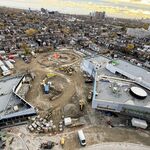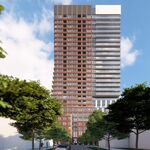Bojaxs
Active Member
So?Being situated higher up, you'd need longer platforms with ramps at shallow angles.
People in wheel chairs can still access the C-train.
Ramp height seems to be the only advantage low floor has over high floor. Name another advantage of low floor.
No it's not. The low floor trains have higher maintenance costs. Fixed bogies vs the more conventional bogies on a high floor train.Going low floor is cheaper and more pragmatic.
Because it was a very silly idea to use low floor LRTs.I think its hilarious that people are debating retrofitting or building new tunnels/building new bridges, for a line that has taken 13+ years to be built, and isn't even open yet...
Last edited:




